Stem cell implantation
What Is Stem Cell?
In the process of cell differentiation, cells will completely lose the ability to split due to high differentiation, eventually they will die. Therefore, in the process of development, in order to make up for this deficiency, human body remains a part of undifferentiated primitive cells, which are called stem cells. Stem cells are kind of primitive cells (also the original cells of our body) which can self-renew and have the potential of multi-directional differentiation. Under certain conditions, they can be specially induced to directionally differentiate into a variety of functional cells or tissues and organs, the medical community calls them as" universal cells".
Many human diseases are related to the death of cells. After stem cells are implanted into human body, they can repair or replace the damaged lesions and aging cells, so as to achieve the purpose of treatment.
Currently, domestic and international techniques for preservation and transplantation of stem cell have been applied in clinic and it shows good effects in diseases like neurological diseases and autoimmune diseases.
Types of Stem Cell
According to the potential of differentiation, stem cells basically can be divided into the following three types.
(1) All-function stem cell
Those stem cells have potential to differentiate complete individuals, such as embryonic stem cells, which have the morphological characteristics cells similar to early embryonic cells and have very strong ability of differentiation, can unlimitedly proliferate and differentiate into more than two hundred kinds of cells from whole body and further form all tissues and organs of the body.
(2) Multifunctional Stem Cells
Those stem cells have potential to differentiate into a variety of tissues instead of the ability to grow into complete individuals, which indicates that their potential of development is limited. Typical example is multifunctional hematopoietic stem cell of bone marrow. It can differentiate into at least 12 types of blood cells instead of other cells apart from hematopoietic system.
(3) Monofunctional stem cells (Specific or partial stem cells)
These kinds of stem cells can only differentiate directionally into one type or two types of cells that are closely related, such as stem cells in the basal layer of epithelium, myoblasts contained in muscle which is also called satellite cells.
The Source of Stem Cells
Currently, stem cells mainly are extracted from bone marrow and cord blood. Stem cells in bone marrow are more primitive than those from peripheral blood, while stem cells in cord blood are more primitive than those from bone marrow. Therefore, stem cells in cord blood has the strongest ability to self renew, the fastest time to reproduce, while those in bone marrow take the second place. Besides, stem cells in cord blood account for the largest percentage than those in bone marrow.
Principle of Stem Cell Transplantation
The principle is through isolation, culture, induced differentiation.ect in vitro, stem cells can be cultivated to be a kind of new, normal, and younger cells, tissues, organs. Through specially transplanting into the body, they can instead the cells with normal or unusual death. It has brought an epoch-making revolution for the treatment of a variety of intractable diseases.
Advantages of Stem Cell Transplantation
Stem cell transplantation means that transfuse stem cells as” medication” into patient’s body and they will repair the damaged tissue cells and organs in order to control diseases. This therapy does not replace structure and function of the original tissues and organs, but it can realize the unexpected effects that other treatment cannot reach.
1. It will not cause immunological rejection
2. It does not need to know the exact mechanism of the disease
3. Source of stem cells are extensive and it is convenient to get
4. There is no side effects like conventional treatment may cause and its effects are confirmed.
Clinical application
The conventional treatment methods widely used all over the world are hard to treat the difficult and complicated diseases such as Type 1and type 2 diabetes, diabetic foot, hepatocirrhosis, severe liver diseases, nephrotic syndrome, lupus nephritis, necrosis of femoral head, myasthenia gravis, male sexual dysfunction and peripheral vascular diseases.ect. Clinical treatment of stem cell transplantation can be applied to those patients with the disease mentioned above.
Quality of stem cells is very important for transplantation so the method that simply separate patient’s stem cells from peripheral blood or bone marrow and transfuse into the patient’s body basically has no good effect.
Modern Cancer Hospital Guangzhou builds a single biology laboratory in which we adopts special techniques to perform isolation and purification in vivo so as to guarantee purity of those stem cells. Before collection, those stem cells will be strictly screened. From collection, subculture and transfusion to patient’s body, every step strictly follows the criterion of quality control, so as to guarantee the safety of this treatment.
“One station” medical system constructed by Modern Cancer Hospital Guangzhou combining multiple disciplines, can perform comprehensive diagnosis and treatment for patients under the condition of without adding patients’ burden. Therefore, on one hand, it can provide all-round and heartfelt medical services, and on the other hand, it improves medical efficiency and level. There are many channels can be applied to conduct the communication between patients and doctors, like online consultation, email, telephone conversation, and face-to-face consultation. All these consultation services can effectively help patients to fight the cancer. While the medical team faced by the patients includes doctors, nurses, dietitians, interpreters and so on to meet various demands in different level of different countries. Patients would be more confident under the unobstructed communication environment to cooperate the hospital to diagnose and treat the diseases.
-
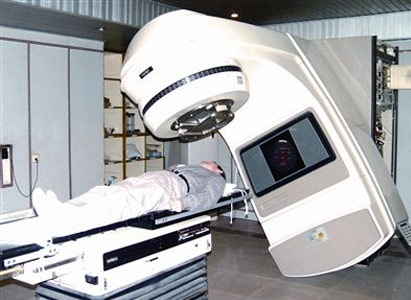 Radiation Therapy...
Radiation Therapy...
Radiation therapy or radiotherapy is a therapy using ionizing radiation, generally as part of cancer treatment to control or kill malignant cells, which can be divided into systemic...more>>
-
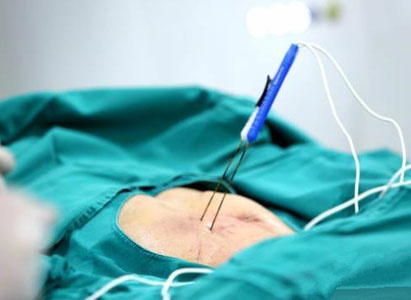 Introduction of Nanoknife Techn...
Introduction of Nanoknife Techn...
Nanoknife is a brand-new cutting-edge ablation technology for tumor treatment. It breaks the membrane of tumor cells with high voltage pulses from electrode probes, resulting in mul...more>>
-
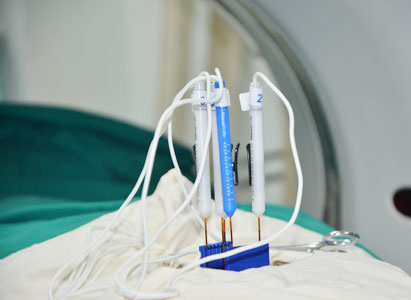 Successful case of nanoknife ab...
Successful case of nanoknife ab...
Modern Cancer Hospital Guangzhou successfully completed a case of nanoknife which was performed under CT guide and general anesthesia to ablate pancreatic cancer....more>>
-
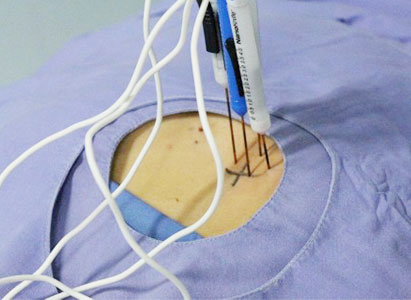 Nanoknife:safety and quick re...
Nanoknife:safety and quick re...
Nanoknife is the latest, most advanced cancer treatment. Nanoknife is suitable for pancreatic cancer treatment, which can raise the survival rate to more than 2 times for them....more>>
-
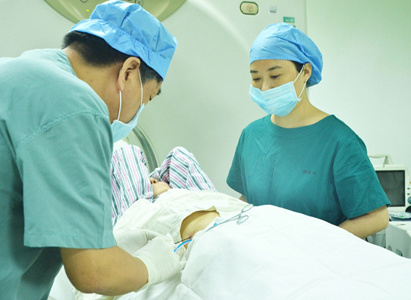 The Latest Direction of Tumor T...
The Latest Direction of Tumor T...
Microwave ablation (MWA) is a form of minimally invasive physical therapy with the highest inactivation rate at present. It is used in interventional radiology to treat cancer in Mo...more>>
-
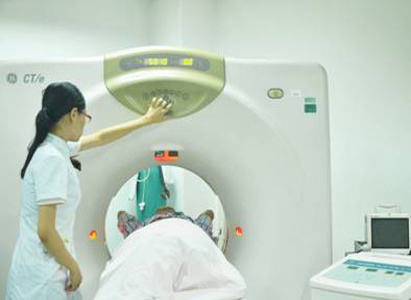 Microwave Ablation (MWA): Opene...
Microwave Ablation (MWA): Opene...
Microwave ablation (MWA) is a form of minimally invasive physical therapy with the highest inactivation rate at present. It is used in interventional radiology to treat cancer in Mo...more>>
-
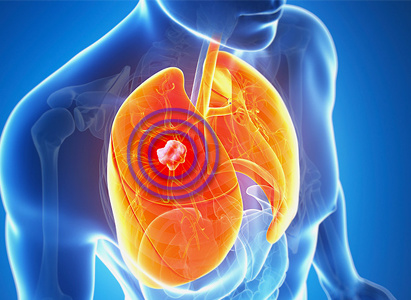 Cryotherapy and Lung Cancer...
Cryotherapy and Lung Cancer...
Currently, the traditional treatments available for lung cancer are surgery, chemotherapy and radiotherapy. However, with the advancement in the medical technologies, minimally inva...more>>
-
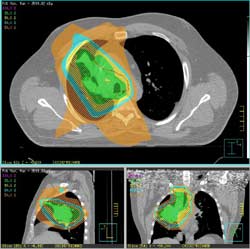 Photon Knife/3D Conformal Radia...
Photon Knife/3D Conformal Radia...
Photon Knife uses the targeting information to focus precisely on the tumor, while avoiding the healthy surrounding tissue. This exact targeting are more effective in shrinking and ...more>>
-
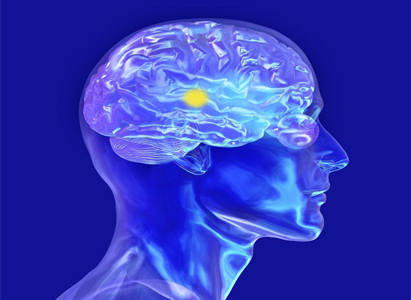 New combination therapy for bra...
New combination therapy for bra...
The new method developed by Modern Cancer Hospital Guangzhou to treat brain tumor: photon knife + targeted therapy, if combined with traditional Chinese medicine immunity, can effec...more>>
-
 Interventional Therapy:Starves ...
Interventional Therapy:Starves ...
What is interventional therapy? Interventional therapy is a mini-invasive therapy that under the guidance of medical image equipment. It mainly has two categories: vascular interven...more>>
-
 Green Chemotherapy...
Green Chemotherapy...
MCHG modified conventional chemotherapy with means, minimizing its side effects while maximizing the efficacy. With the advantages of reduce side effects greatly, those chemotherapi...more>>
-
 Natural Therapy...
Natural Therapy...
natural therapy, which is one of the green cancer comprehensive therapies, can reduce the side effects of radiotherapy and chemotherapy and kill cancer cells and virus....more>>
Q&A Portion
- Question:Doc, I want to ask particle implantation, I was diagnosed breast cancer last year.
- Answer:Particle implantation is to implant the radioactive particles inside the tumor by percutaneous puncture. The radiation releases from the particle can constantly kill the tumor cells without hurting other organs or tissues around tumor. Actually it is an internal radiotherapy with less side effects and small complications. That is depending on individual condition. We need to study your case first then we can know if this treatment is the best for you. You can send us your medical reports, records, imaging materials like CT scans, MRI etc. for our specialist team study first. Then we would offer you the treatment plan accordingly.




